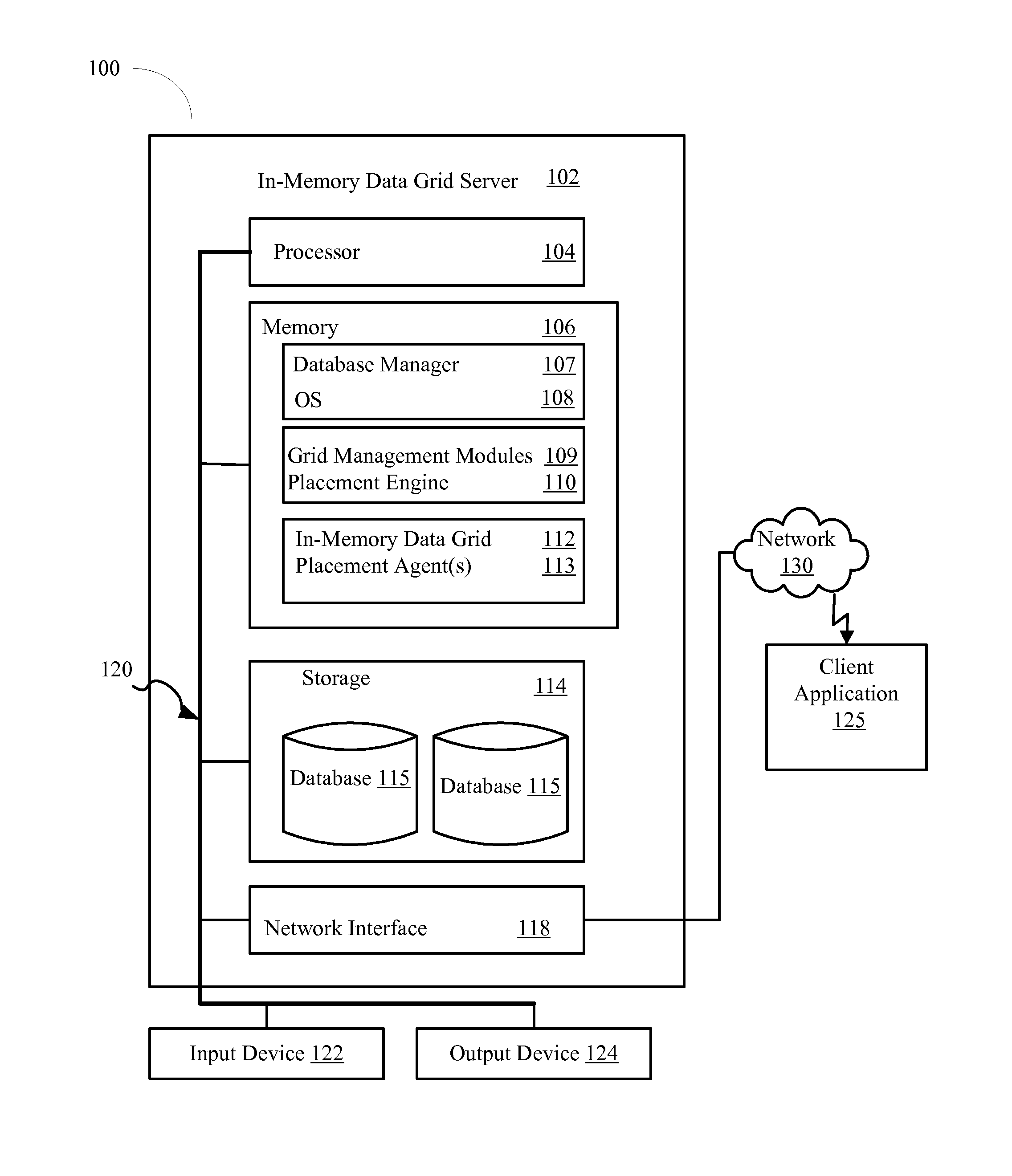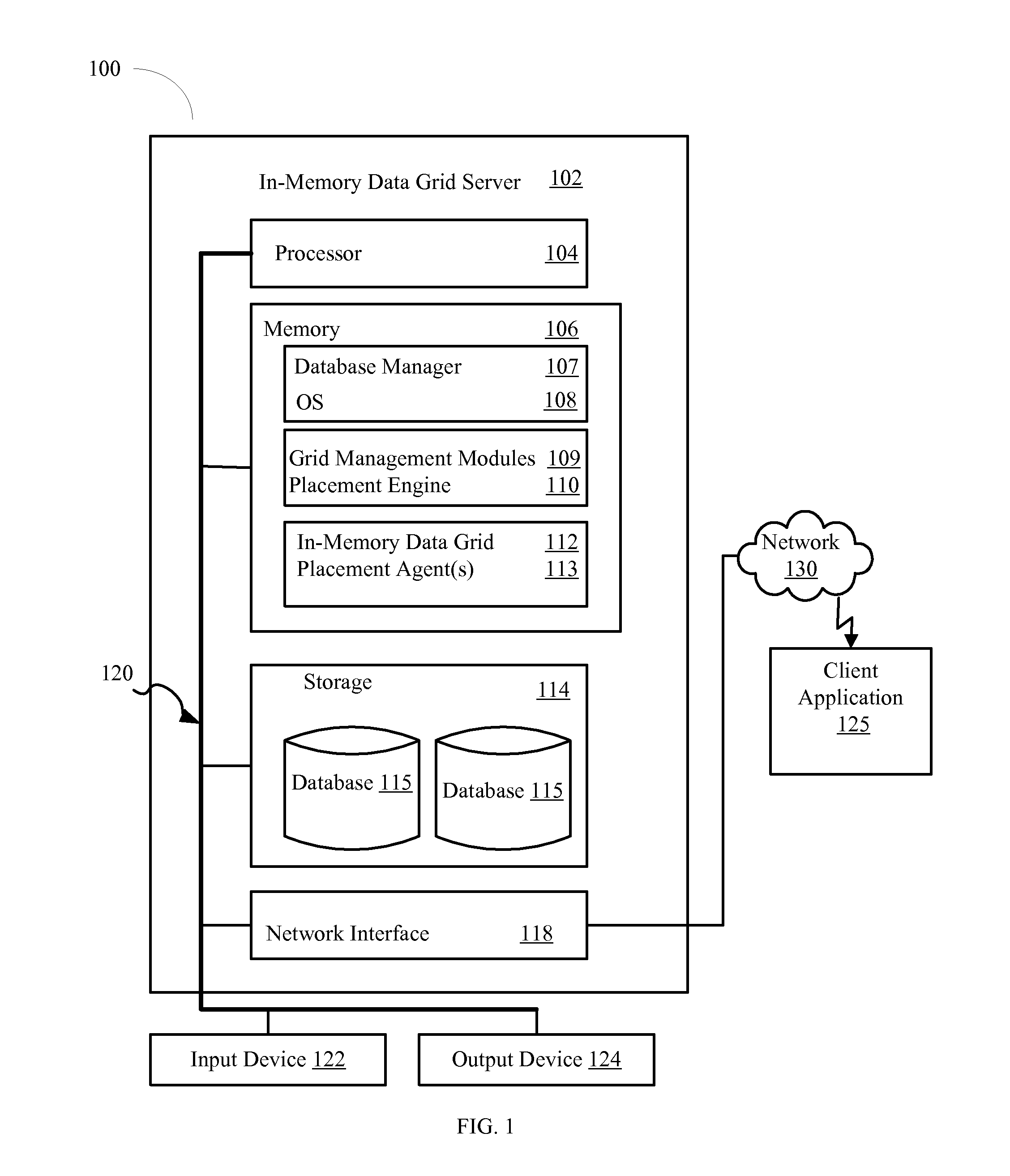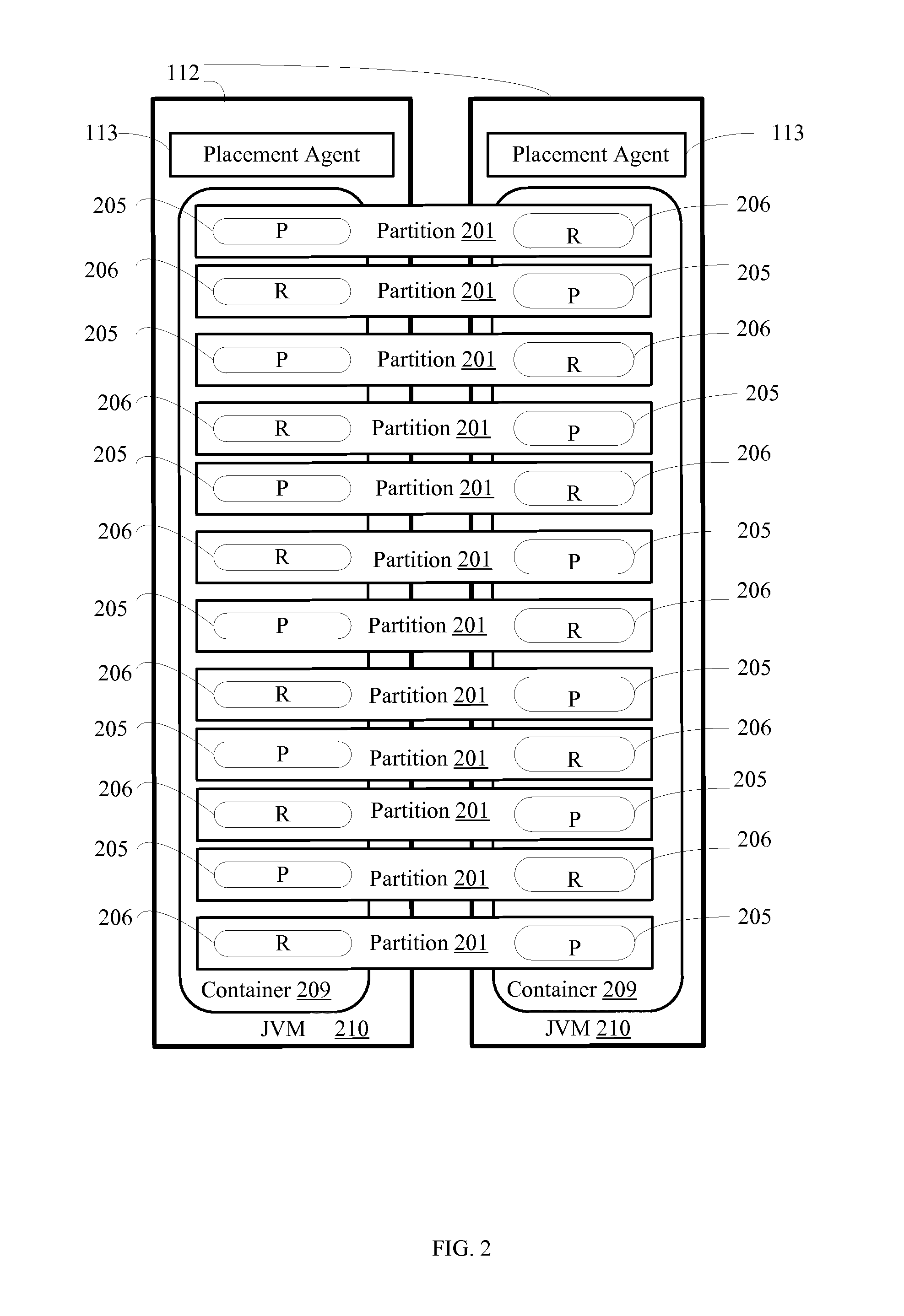Autonomic data partition placement in an in-memory data grid
a data grid and data technology, applied in the field of data management, can solve problems such as extensive system unavailability
- Summary
- Abstract
- Description
- Claims
- Application Information
AI Technical Summary
Benefits of technology
Problems solved by technology
Method used
Image
Examples
Embodiment Construction
[0012]Embodiments of the present invention will now be described with reference to the figures. FIGS. 1-4, depict an exemplary implementation for autonomic data partition placement in an in memory data grid.
[0013]Referring to FIG. 1, a system 100 according to an exemplary embodiment is depicted. The networked system 100 includes an in-memory data grid server 102 (IMDG) containing an in-memory data grid 112. The IMDG server 102 may also be connected to other computers and servers via a network 130. The network 130 may include connections, such as wire, wireless communication links, or fiber optic cables.
[0014]The IMDG server 102 generally includes a processor 104 connected via a bus 120 to a memory 106, a network interface device 118, a storage 114, an input device 122, and an output device 124. The IMDG server 102 is generally under the control of an operating system 108, such as for example Linux. However, any operating system supporting the functions disclosed herein may be used. ...
PUM
 Login to View More
Login to View More Abstract
Description
Claims
Application Information
 Login to View More
Login to View More - R&D
- Intellectual Property
- Life Sciences
- Materials
- Tech Scout
- Unparalleled Data Quality
- Higher Quality Content
- 60% Fewer Hallucinations
Browse by: Latest US Patents, China's latest patents, Technical Efficacy Thesaurus, Application Domain, Technology Topic, Popular Technical Reports.
© 2025 PatSnap. All rights reserved.Legal|Privacy policy|Modern Slavery Act Transparency Statement|Sitemap|About US| Contact US: help@patsnap.com



